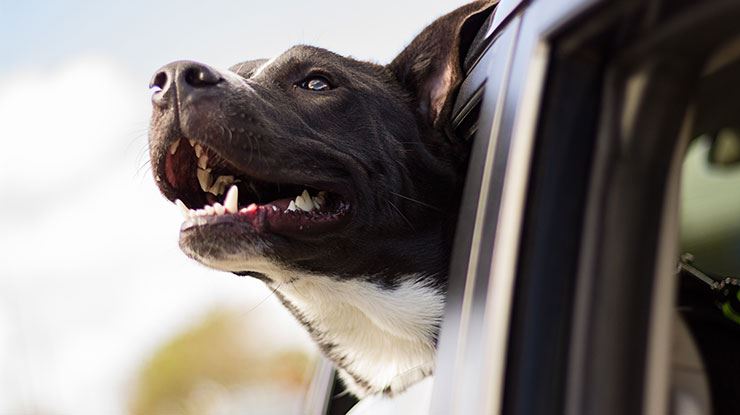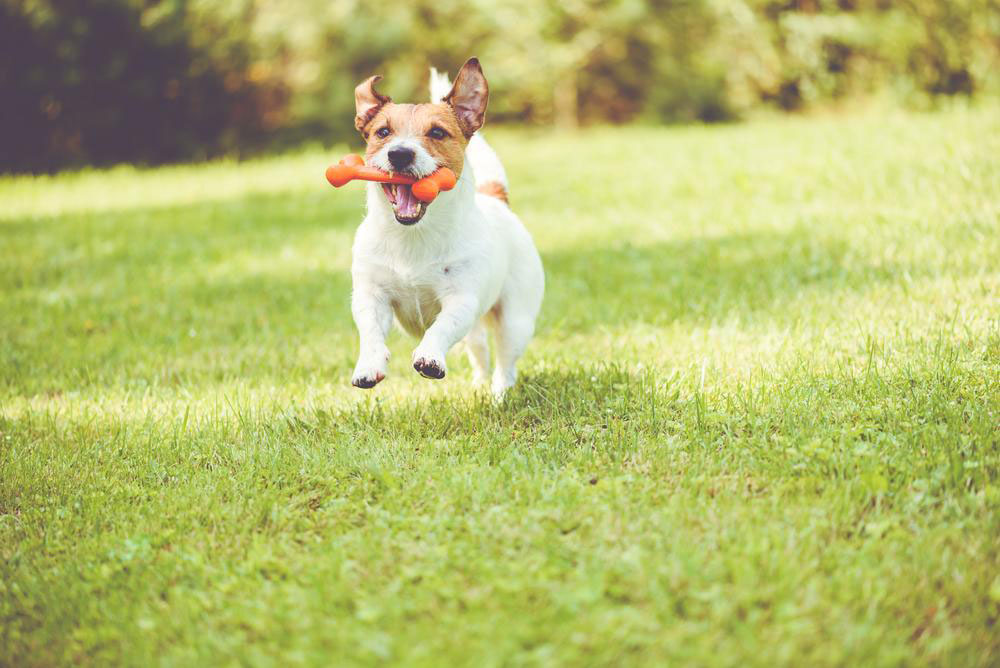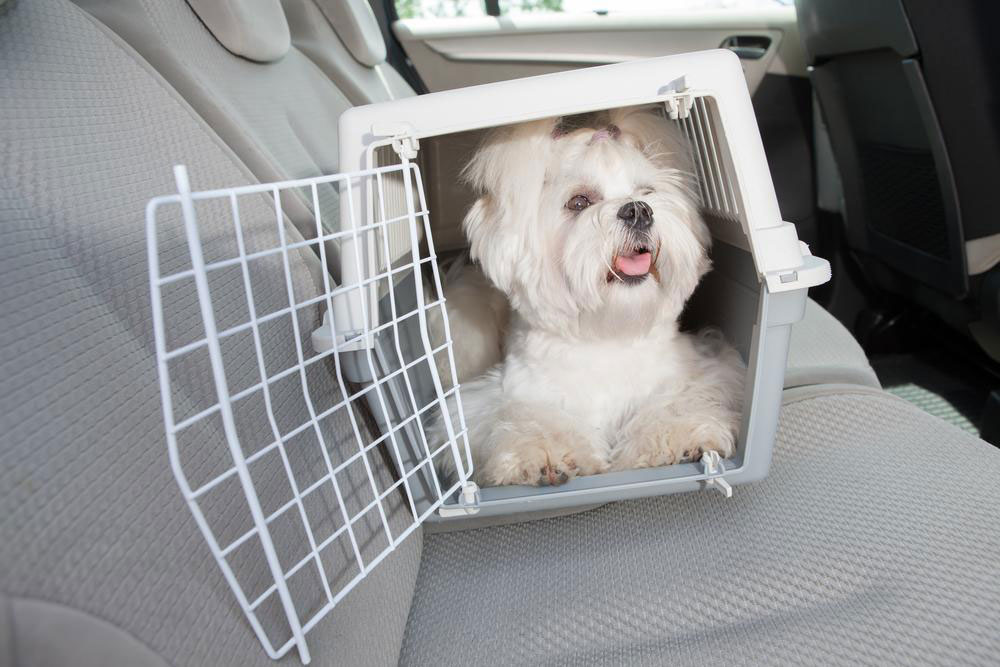
The Ultimate Guide for Traveling with Your Dog
It’s almost summertime, which also means it’s almost vacation season. Many dog parents opt to board their pup or get a dogsitter while they’re out of town, but sometimes taking your pup along is the best decision. In other situations, your dog has to travel with you, such as during a move. Whether you’re traveling with your pup by choice or necessity, we’ve rounded up 15 tips that will turn both you and your doggo into travel pros.
Remember that dogs get travel anxiety, too.
Do you get motion sickness in a car or feel nervous while a plane takes off? Dogs can experience all of these feelings and even more since they usually travel less than humans. Try to diffuse this anxiety as much as possible by planning ahead and packing familiar items, from your dog’s favorite toys to his regular food to a blanket covered in his scent.
Experiment with short trips beforehand.
This might not be possible if you’re planning to fly, but if you’re driving, take your pup on some short test trips before the big day. This will allow you to assess your dog’s comfort level with traveling and answer some important questions. Does your dog get nauseated in the car? Does he bark the whole time or settle down right away? You’ll be able to figure this out and more ahead of time during your test drives.

Wear your dog out the day before you travel.
Exercising your dog means she’ll be tired, and a tired pup sleeps all day making travel easier for both you and for her. Play fetch energetically, go for a run, or spend the day at the park. Whatever you do, be sure your pup has burned off as much excess energy as possible before you hit the road.
Have your pup’s ID ready.
Like a newly-minted 21-year-old approaching a bouncer at the door, your dog should have his identification ready to go. This means a secure collar with tags that have your current cell phone number and other contact information on it. If possible, you should also have your dog microchipped so he’ll always have his ID on him, even if he manages to wiggle out of his collar.
Be prepared for emergencies.
Obviously, you hope your dog never needs to go to the vet, whether you’re at home or on vacation—but you should be prepared, just in case. Do some research on wherever you’re visiting and identify a nearby vet that will be open during the dates you will be there. Save the information in your phone or write it down on a piece of paper and store it in a waterproof Ziploc bag alongside other helpful documents such as a current photo of your dog and any relevant prescriptions.
Get a clean bill of health from your regular vet.
Regardless of where you’re traveling, your dog should be caught up on his vaccinations and otherwise in good health before you embark. If you’re flying or crossing certain state or international borders, your pup will also need a health certificate. Pay a visit to your regular vet before you leave to get the necessary paperwork.
Overpack for your pup.
Veteran travelers pride themselves on being able to fit everything they need into a single carry-on with room to spare, but you can’t take the same strategy with your dog. You should always pack extra items, including food, water, toys, blankets, paper towels, cleaning supplies, deodorizing spray, and poop bags. Trust us, you don’t want to run out of these while on a road trip.
Keep food, water, and medication consistent.
If you can, bring enough food, water, dog treats and medication to last the entire trip. This will help provide a sense of consistency for your dog and help ease feelings of anxiety. If your dog tends to have stomach trouble, keeping her food the same can help prevent an upset tummy while traveling as well. Finally, bringing enough supplies along will ensure you don’t have to make an emergency pet store run in the middle of your vacation.
Be strategic about eating.
Some dogs are fine eating a small meal before traveling, while others will experience motion sickness and promptly vomit it up as soon as you get going. Use your test trips to experiment with what eating schedule works best for your dog. However, do make sure your pup has plenty of water so she doesn’t become dehydrated en route.

Live the crate life while traveling.
Whether traveling by car or plane, your dog should either be crated or left in a carrier. Most airlines require that your dog be contained in some way depending on size, and even if you’re driving, your dog shouldn’t be allowed to roam free. His antics can distract the driver, and your dog can suffer injury if the car brakes suddenly and he gets thrown around. Crates can also make traveling less stressful, since your dog can get used to the crate before you hit the road.
Plan for frequent potty stops.
You might be able to make a 10-hour drive without stopping, but your pup definitely can’t. Stop to stretch your legs every few hours and let your pup relieve herself. Plus, letting your dog out every couple of hours will keep her from getting too anxious. Make sure you also leave some time once you arrive at your destination to take your dog for a long walk as a reward for successfully traveling. However, this rule does not apply to flying. You should look for nonstop flights, as dogs must remain in the hold during layovers.
Think twice before flying with your dog.
To you, your pup is a beloved member of the family, but to an airline, he might be a piece of cargo. Large dogs are usually secured in crates in the hold, while small dogs may be allowed into the main cabin if kept in a carrier. The extreme temperatures and oxygen deprivation in the hold on certain flights can sometimes pose a health risk to your pup. You must make reservations for your dog while booking your own tickets, and you should call ahead to the airline to confirm their policies.

Find dog-friendly lodging.
Not every hotel or campground allows pets, so be sure to call ahead and confirm their policy before you book your stay or plan your camping trip. For indoor lodging, double-check to see if they charge an extra fee on top of the regular booking if a pet stays on the premises.
Don’t leave your dog alone.
Your dog should not be left in a parked car, even in the shade, even with the windows cracked. Temperatures in parked cars can rise quickly, and if you must leave your dog in the car, make sure a human is with him. Also, even if your dog is the most obedient pup in the world, don’t let him off the leash while traveling. Lost dogs are difficult to find, and all the more so if you’re in an unfamiliar area.
Don’t sedate your pup unless absolutely necessary.
You shouldn’t force your dog to travel merely because it’s convenient for you. If your dog is really anxious about traveling, look into boarding her at a kennel or getting a dogsitter so she can stay home. Tranquilizers should only be used if they absolutely cannot be avoided, such as during a one-time move. If your dog’s anxiety is milder, you can look into CBD dog treats, which help pups relax naturally (and, don’t worry, these don’t contain THC, the compound that would make them feel high or “buzzy”).
Traveling can be stressful for both you and your pup, but proper planning can make into a fun experience for both of you. If you’re bringing Rover on the road, follow these 15 tips to ensure you both have the trip of a lifetime in the best way possible.










